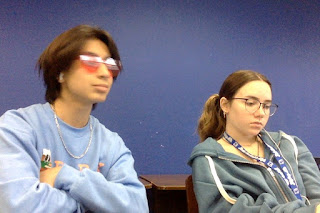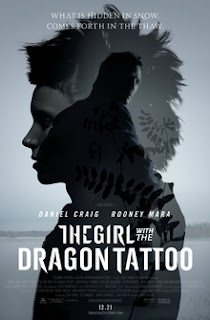a lot of... Reflection!
1. Because my partner and I was restricted to what I as a teenager was able to reasonably access to generate a music video, there are some differences from a traditional rap video. An example of this is how conventionally, rap music videos tend to show off how well they are financially. This can be seen through fancy cars, large houses, expensive jewelry, or large stacks of money being displayed throughout the video. I did not have access to these props, so to combat this I used similar looking props to parody the traditional aspects of rap videos. I used Monopoly money as a prop for real money and cheap sunglasses to impersonate expensive jewelry. Along with financial superiority, often rappers will implement weapons in their videos, in order to demonstrate a sense of power. Again, while my music video challenges these conventions by not actually displaying live firearms, it does follow the convention in symbolic sense, where I used a water gun and nerf gun. to parody what is typically seen. As for the music video itself, the song “a lot” demonstrates the realities of growing up in rough neighborhood where gang violence and activities is prominent. And while I demonstrated this in an impersonating sense as I do not have the resources to adequately demonstrate them, I do display these social group representations. In my music video it displays a series of rhetorical questions all answered with “a lot”. And while some of these questions have a positive meaning when the answer is “a lot” such as “how much money you got”, a majority of these questions show the serious consequences of gang violence, referencing people being injured, dying, or having to lie to the ones close to you. “A lot” shows the realities of gang violence, and how while the media may show it as a cool and exciting life to live, it’s actually and dangerous and genuine threat to not only those involved, but just innocent victims of circumstance. Overall, it’s through these series of rhetorical questions that gang violence is given it's representation and awareness is spread.
2. My music video engages with its audience through a series of questions. My music video undergoes a series of questions all answered with the same response: a lot. However, while the answer may be the same, the context for the answer given varies from segment to segment. This results in multiple clips being put in my music video as instead of sections of one continuous shot for my music video, I instead present multiple shorter clips that consistently retain the viewers attention. These shots are short, and they are easy to understand. So, because of the simplicity of the content, viewers can easily follow along and have no time to zone out or get lost. Should this music video be distributed as a real media text, the largest platform to upload this would be sites like Vimeo or YouTube. Because YouTube has millions upon millions of users daily, along with the ability to like comment and share other videos one may come across, Traction would be easiest to gain on YouTube and could provide the most exposure. Along with YouTube, other social media platforms such as TikTok and Instagram would be the next platforms I use. Although a smaller platform, TikTok and Instagram present a golden opportunity for publication as less effort is required to gain a large amount of traction. TikTok and Instagram’s primary demographic are those looking for short, easy to understand, and simple content. And because of that my montage aspect of my music video is the ideal content that gains attention on these platforms and can generate traffic back onto YouTube and an effective rate. Overall through my attention grabbing techniques and social media, I would not only would distribution be easy, but I would consistently engage with my audience.
3. I started off unsure of how to use the recording equipment, but with practice and guidance from a more experienced colleague, I quickly gained confidence in my abilities. I learned how to set up and test microphones to ensure optimal sound quality for the video. I became more skilled at using the digital audio workstation to record, edit, and mix the audio for the music video. I discovered the importance of lighting and how to set up and adjust lights to create the desired mood and look for the video. I learned how to use a camera and how to frame shots to achieve the desired visual aesthetic. I became more adept at choosing and setting up locations for the video, considering factors such as lighting, background, and overall ambiance. I practiced directing and working with the talent to get the best possible performance for the video. I learned how to troubleshoot technical issues that arose during the recording process, such as audio glitches or camera malfunctions. I gained experience in working with a team and coordinating schedules to ensure that all necessary tasks
were completed in a timely manner. I developed a better understanding of how to effectively communicate with the team to ensure that everyone was on the same page. I learned how to manage my time and prioritize tasks to stay organized and on track. I gained a greater appreciation for the attention to detail that goes into creating a high-quality music video. I discovered new techniques and approaches to recording and producing music videos through trial and error. I became more comfortable taking creative risks and trying new things in the recording process. Overall, my production skills grew significantly as I gained hands-on experience and learned from my mistakes along the way.
4. I began by scouting locations for the music video using Google Maps to get a feel for the area and plan out the shots I wanted to capture. In order to acquire my shots I used an iPhone camera to film the music video and edited the footage using iMovie on my laptop. I created a rough cut of the music video and shared it with my group using Google Drive, so they could provide feedback and make any necessary changes. I used music platforms such as YouTube, Spotify, and Musi to not only select but to extract my audio of the song used in the video. I utilized online resources, such as other music videos and shots, to enhance the techniques used for the music video by applying what I saw to my own project. I used email and google drive to access and extract the raw footage and edited versions of the music video from my laptop or phone. I uploaded the final version of the music video to YouTube and Vimeo. I used media platforms such as Blogger, to publicize my video with my own image. I collaborated with the group to come up with ideas for the music video and used communication software’s such as iMessage, Mail, and Facetime to contact and coordinate with my partner. I used video editing software to edit light levels, speed changes, or other visual effects to the music video.
I hope you all enjoyed this Highschooler's Critical and Creative Reflect on his project and...
I'll see you all in the next one:)
One last picture of Lauren and I:)



Comments
Post a Comment